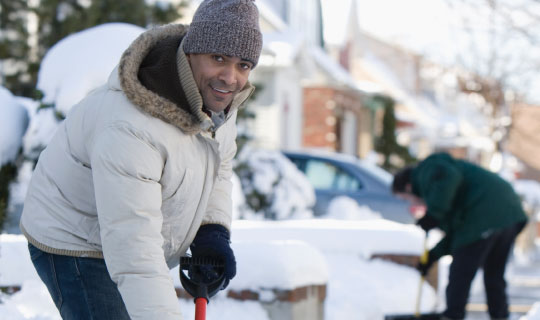
For many, winter snow conjures images of sledding and hot cocoa. But beneath the beauty of the frosty landscape lies a hidden danger: the potentially serious cardiac risks posed by shoveling snow. While snow removal may seem like a mundane chore, it can pose significant threats to cardiovascular health, particularly for people who are sedentary or with preexisting health conditions.
Shoveling snow is a physically demanding activity that requires considerable exertion, especially when dealing with layers of heavy, wet snow. The repetitive lifting and twisting motions involved in shoveling can put serious strain on the heart and cardiovascular system. For individuals who are not accustomed to regular exercise or who have underlying heart conditions, this burst of intense physical activity can trigger adverse cardiac events.
“Among the chief concerns associated with snow shoveling is the increased risk of heart attacks,” said, Howard Levitt, M.D., F.A.C.C., Medical Director Outpatient Cardiology, Newark Beth Israel Medical Center and Robert Wood Johnson University Hospital Rahway, RWJBarnabas Health facilities. “It’s a supply and demand issue. Your muscles are working harder than usual and need more oxygen. Your heart has to pump harder and faster to supply that oxygen. Exercise also constricts blood vessels, increasing blood pressure and the resistance on your heart as it tries to meet the increased demand for oxygen. This added stress on the heart can lead to the formation of blood clots or rupture plaque that has built up in the arteries.”
Snow shoveling can also precipitate other cardiovascular issues. These include angina, a condition characterized by chest pain or discomfort due to reduced blood flow to the heart muscle. There is an association between cold weather and physical exertion in triggering symptoms in susceptible individuals, possibly indicating an underlying heart problem that may require medical intervention.
“Shoveling snow may seem at first like a trivial task,” added Levitt. “But people with existing cardiovascular risk factors, including hypertension, diabetes, obesity, or a history of heart disease, should use caution. Older adults, who may already have compromised heart function, are especially vulnerable to the cardiac dangers of shoveling.”
To minimize their risk, individuals should first and foremost consult with their doctor to assess their cardiovascular health and determine whether shoveling is a safe activity. Those with known heart conditions or risk factors may be advised to avoid shoveling altogether or to use alternative methods, such as using a snow blower or hiring a snow removal company.
Warming up beforehand and taking frequent breaks can also help, as can dressing appropriately for the cold in layered clothing with moisture-wicking fabrics.
“Nobody wants to leave snow on their sidewalks and driveways, and after a storm our first inclination is often to grab a shovel and get out there before it freezes up,” said Levitt. “But understanding our cardiovascular risks and taking appropriate precautionary measures are well worth the effort.”